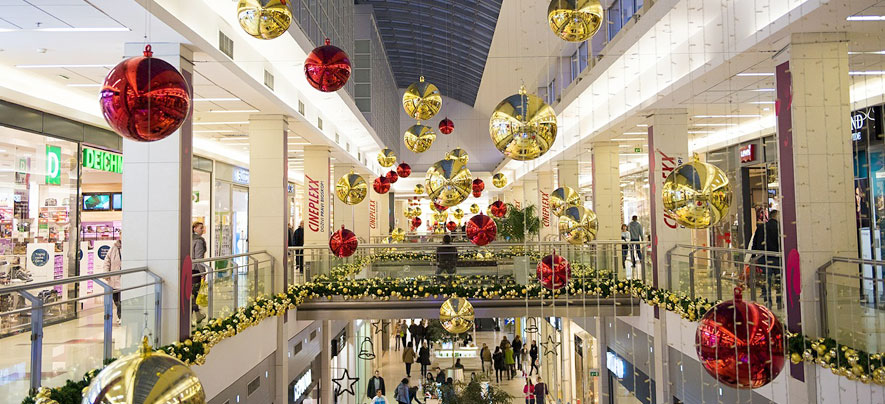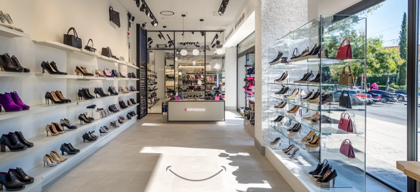Centres of Attraction

Property & Real Estate
530 week ago — 12 min read
Retail real estate is the mirror of the society. It reflects the times we live in. This is especially true in the case of malls. “One look at a mall and you know what the current trends are and how people think these days. Even the structure of a mall tells you a story,” said Dr Harvinder Singh, Associate Professor, Marketing, IMT Ghaziabad, who is known for his study on Indian malls. More importantly, malls tell us what people want these days and how they live.
Much has been said about how the consumer has changed today. So we all know how ‘social’ and ‘digital’ he is. (We all – the retail community itself – are consumers too at the end of the day) Retail business exists to give the consumer what s/he wants, and hence the places where we conduct business have to enable us to fulfill this basic purpose. So the metamorphosis of malls into centers of social interaction is a natural response to the change in consumer preferences and their social behavior.
Shift to social
In an article in the Shopping Centre News, American retail expert, Stephen Roberts describes the biggest change shopping centers have undergone in the recent years: “A shopping center today is what a village square used to be long ago — not only a place to shop but also a place of community.”
Rajneesh Mahajan, COO, Inorbit echoes this sentiment. “Visiting a mall has changed from being a transactional activity to being a recreational one. At Inorbit, we believe that to be preferred among consumers, we need to be seen as social spaces where kids, youngsters and adults connect with each other,” he said.
People now visit malls not just to buy something but to spend quality to time with their loved ones, or even alone. They may never actually buy something but spend a day entertaining themselves or chilling out. “It has all become experiential and this is true for all retail, not just for shopping centres. In fact, experience has now become a hygiene factor,” said S Raghunandan, CEO of Virtuous Retail (VR). The very positioning of VR is that of a company that creates social hubs for urban Indians through ‘connecting communities.’ “At VR our whole theme is connecting communities. Anything we do has to have a direct impact on the community; we have to be more and more relevant to the community,” said Raghunandan.
We now see concerts, shows, and many other participatory activities being organized by malls. The social-centric approach is towards inspiring a sense of belonging in the catchment, drawing them to the center for every occasion. Research has shown that the more time a customer spends in a mall, the higher amount of money he spends there. And that’s why while positioning and other activities are attracting customers to the mall, innovations in mall design are making them want to stay there longer, often for an entire day by making it as comfortable as possible to shop or move about.
Designed to welcome
So we see mall structures coming ‘out of the box’ to appear more welcoming. The confining lines are being replaced by open designs with huge atriums and airy spaces – more places for people to hang out and mingle. “Apart from a great spread of Indian and international brands for shopping, malls now include a play area for kids, local flea markets, performances by artists, exhibitions, experiential area for new product. The innovative food courts have also become an important attraction,” explained Mahajan. There is no compulsion to shop.
Malls are making space provisions in the plan for hosting social and cultural events. These spaces are as much part of the mall experience as are the stores. Then, there are wider corridors for easier navigation to different sections of the mall, pop-stores, and kiosks, facilities like prayer rooms or feeding rooms to prevent the customer from stepping out for their routine. Roomier well-lit, multi-level parking spaces ensure that customers feel safe leaving their cars the entire day. Often, mall companies are roping in mall advisories and international design firms to help them with this. We also see a lot of attention being paid to zoning and making all touch points including stores and kiosks being better designed and user-friendly.
“Mall developers are gauging the interest of retailers and carefully brainstorming to bring the best mall project in the market with the best brands, architecture, design and technology. The trend of million square feet mall is catching up in the country,” said Pushpa Bector, Senior Vice President and Head (Leasing and Mall Management), DLF Mall of India. DLF itself is coming up with a 1.8 million square feet project - DLF Mall of India – in Noida that will provide a good mix of leisure, dining and entertainment options to offer an who experience beyond shopping.
Engaging with technology
Technology is proving to be a great ally in delivering an enhanced customer experience and inspiring shopper loyalty. From automated parking, self-operated parking meters, free Wi-fi and even special apps, mall developers are integrating technology at all levels to provide a differentiated experience. The app rolled out by Inorbit malls is a good example of this. The app enables customers to avail of offers, get event updates, and also locate their cars in the parking lot. VR Surat has installed giant sized screens for displaying various offers by retailers and broadcasting events such as matches, which are huge crowd-pullers.
In addition, most malls have a presence on popular social media platforms like Facebook and Twitter to keep the shoppers engaged with the mall even with they aren’t visiting.
Changing relationships
Mall developers have realized that they are in it together with the retailer and this has changed the relationship dynamics between the two. “Like internationally, India is also now moving towards the revenue share model with or without minimum guarantee. This model of revenue share helps creating a strong relationship and partnership between the mall developers and retailers,” said SusilDungarwal, Chief Mall Mechanic, Beyond Squarefeet, a mall advisory firm.
“New rental models such as the revenue sharing model have proved to be a win-win situation for both retailers and developers,” observed Anshuman Magazine, CMD, CBRE South Asia. Nearly all malls in India have adopted the revenue share model. This provides developer a financial incentive to work on ways to improve productivity for retailers and in turn improve rental income. There are various ways to structure revenue share transactions and depending on the financial model and market potential of retailers in their respective category, the model is adopted.
Another interesting development in the relationship is the sharing of most information right from marketing plans, sales per day figures, targets and forecast between mall developers and retailers. “We base our plans on the retailers’ plans. More and more stores in our centre are getting wired up at the POS. Even if they don’t bill through our POS, they are happy to be connected because we can give them an accurate analysis of the store’s end of day sales. Besides, the retailer doesn’t have to incur costs, we invest in the technology infrastructure,” explained Raghunandan.
Money matters
Funding has been an issue for retail real estate developers. However, there is some amount of interest being shown by institutional investors and private equity companies, though they are few and far between. “There is a need for patient capital in this business. Whatever you do, it takes at least five to seven years to see some results. Malls can’t succeed without it and people are willing to wait. That’s why if institutional funding becomes available, it will certainly make life easier,” said Raghunandan. As of now, large developers like DLF prefer their own funding.
But it might change soon with the government giving a go-ahead for REITS. “With REITs now being opened up in the commercial / shopping centre sector funding for Malls will become easier and a better option for funding shopping centers,” observed Dungarwal. There are also many international mall developers looking at acquiring existing shopping centers with reasonable returns.
Impact of e-commerce
How much of a threat is the rapidly growing e-commerce to shopping centres? According to Raghunandan, it (e-commerce) will certainly have an impact, especially on some categories. “That’s why experience becomes all the more important,” he said. However, several other experts feel that e-commerce will not pose a threat but will evolve to complement shopping centers. There is a general feeling that it is still early to actually gauge the extent and nature of the impact, yet Dungarwal feels that mall developers can’t afford to take this aspect lightly and ensure that the dent e-commerce has created in offline-retail business does not grow into a crater.
In the long run, we may see a shift in the tenant mix in malls, driven by the changing trends in e-commerce. “Technology and e-commerce will exist alongside malls/high streets in a comprehensive retail environment,” said Magazine of CBRE South Asia, giving a glimpse into a more inclusive future of modern retail.
The e-commerce boom is actually making mall developers rethink about the strategies and new concepts that they can bring in to retain the interest of the consumers. They are now evolving as one stop shop for fashion, food, leisure and entertainment and give a feel of a mini city. Though, a change in the tenant mix is bound to happen, as some sections like electronics and books might get digitized much more than others but malls are surely working towards providing more space to entertainment and food sections,” analysed Bector.
Shape of things to come
There is a dynamic change in the mall culture and we definitely see it is here to stay. Malls are expanding the reach from the metro to the suburbs; tier-II and -III cities. There are numerous mall projects that are slated for opening by next year and they would be successful if driven with a right tenant mix. Convenience of the consumers and the catchment to which the mall caters would hold considerable importance while deciding the mall mix. For malls that are in proximity to the metro cities, we would be seeing an interesting mix of international brands and well established local brands coming up.
“As an estimated figure, the average size of new malls is expected to rise by 2.5 times to touch one million square feet by 2017,” explained Bector. As many international brands plan to make their debut in India, the average size of a mall is likely to increase as foreign retailers tend to occupy large spaces. “As a consequence, both total mall supply and size are expected to increase over the medium to long term. This move would benefit large retailers like DLF as well as consumer, who can expect prices to come down by 10-15% in large format stores. Retail giants will play a significant role in improving supply and distribution systems in the country with economies of scale, superior expertise and trained staff,” she added.
Article Source :STOrai Magazine
View STOrai 's profile
Most read this week













Comments
Share this content
Please login or Register to join the discussion